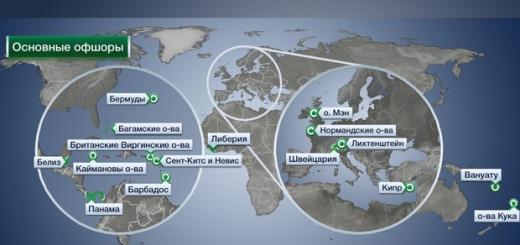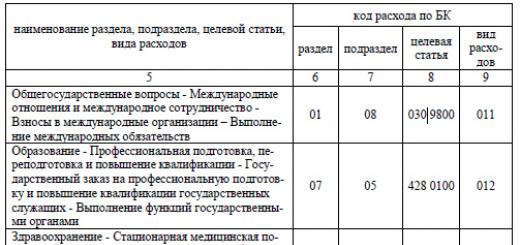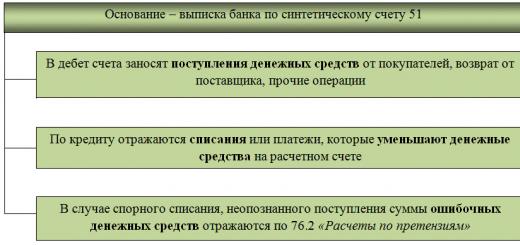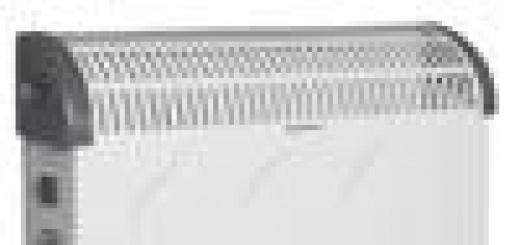You can increase the strength of brickwork by reinforcing. The reinforcement, laid in the seam, allows you to distribute the load over its area. Reinforcement of pillars, partitions, pilasters and other brick structures must be carried out in accordance with regulatory rules. This will guarantee the quality of construction.
Types of reinforcement
The type of reinforcement in brickwork depends on the forces acting on the structure. When the load acts centrally or with a slight deviation from the center of the section of the structure, transverse (mesh) reinforcement is recommended.
If the load is applied with a sufficiently large offset from the center (eccentricity), then longitudinal reinforcement is necessary. It will provide structural strength from bending and stretching.
Transverse reinforcement
For transverse (mesh) reinforcement, meshes of two types are used: with rectangular cells of the "zigzag" type. They are laid on a mortar bed in a masonry seam. The distance between rectangular grids is allowed no more than 0.4 m in height. This is about five rows of masonry.

a - reinforcement with rectangular meshes; b - reinforcement with zigzag meshes
Zigzag meshes are installed in two adjacent horizontal rows mutually perpendicular to each other. Transverse reinforcement is carried out with the removal of the ends of the meshes beyond the surface of the masonry by 5 mm in order to control the reinforcement of the structure.
The thickness of the seam is assumed to be 4 mm greater than the diameter of the reinforcement used. For reinforced masonry structures, the brand of mortar is taken at least 50. The percentage of reinforcement in brickwork by volume determines the amount of reinforcement in it:
μ \u003d V a / V k x 100
For grids with rectangular cells:
μ = 2f a / cs
Where:
· f a - reinforcement section;
c - cell size;
· s - distance between grids in height.

For reinforced masonry structures under heavy loads, a calculation is made, for small loads, the reinforcement is installed constructively (according to the recommendations). The percentage of reinforcement (μ) should be between 0.1 and 1%.
Longitudinal reinforcement
Longitudinal reinforcement takes on the tensile and bending forces that occur in the brickwork. At their large values, obligatory settlement. Structurally, such reinforcement is used for thin walls and partitions, high pillars for stability, and also if vibration acts on the structure.

a - external longitudinal reinforcement; b - external reinforcement in the strobe; 1 - clamps; 2 - longitudinal reinforcement
Reinforcement for longitudinal reinforcement is laid both inside the masonry and outside. For the internal location of the reinforcement, grooves are made in the masonry, external reinforcement is made in a mortar layer, the grade of which is allowed at least 50, and the grade of brick is at least 75.
Longitudinally installed reinforcement is connected to each other by clamps. With external reinforcement, the clamps are laid at a distance of no more than:
· 15 rod diameters in a compressible structure (2–3 rows of masonry);
· 80 rod diameters in a stretched design (maximum 50 cm).
With the internal arrangement of the reinforcement, the clamps are installed at least through a distance equal to 25 diameters of the longitudinal rod.

The protective layer of reinforcement for rooms with normal operation is 10-12 mm. For wet and damp rooms, it is increased to 30 mm. The protective layer for clamps is 10 mm.
The step between the longitudinal rods in the walls and partitions should be no more than 8h, where h is the thickness of the wall. The percentage of longitudinal reinforcement in bars compressed under load is allowed less than 0.1%, in tensioned bars - 0.05%.
fittings
For transverse reinforcement, metal meshes made of cold-drawn wire V-1, VR-1 (V500) with a diameter of more than 3 mm are mainly used. It is also used in meshes and round reinforcement made of steel of class AI (A240) with a diameter of at least 6 mm, if the rods intersect at the seams of the masonry, if not, then at least 8 mm.

The wire and rods in the nets are welded or tied with a wire. For rectangular meshes, the mesh size is 3–12 cm. Zigzag meshes are made from wire with a diameter of more than 5 mm.
The diameter of the longitudinal reinforcement is:
· more than 3 mm for clamps and extended rods;
· more than 8 mm for compressed rods.
Class AI (A240), AII (A300) rods are used as structural longitudinal reinforcement. In most cases, the amount of reinforcement is calculated.

Modern industry building materials produces polymer composite reinforcement, including composite reinforcing mesh. This is a lightweight, high-strength, corrosion-resistant and cheaper material. Composite reinforcement is superior to metal reinforcement in many respects.

For reinforcement, the diameter of composite reinforcement is taken less than steel:
· Ø 6 mm steel - Ø 4 mm composite;
· Ø 10 mm steel - Ø 6 mm composite;
· Ø 12 mm steel - Ø 8 mm composite.
Features of the reinforcement of brick structures of the building
Transverse reinforcement can be used when it is impossible to increase the grade of brick or mortar in order to provide the necessary masonry strength.
Partitions in 1/4 bricks, in order to increase stability, are reinforced with a steel strip of 1.5–2.5 mm or bar reinforcement with a diameter of less than 6 mm every 6 rows of masonry. With a partition thickness of 1/2 brick and its length of more than 3 m, reinforcement is laid in horizontal seams every 5–6 rows. In this case, the ends of the reinforcement must be sealed in the main walls.

Sometimes partitions or internal walls are built at different times with external walls (pillars) mating with them. In this case, rod reinforcement with a minimum diameter of 6 mm is laid in the structure of the main wall or pillar.
Subsequently, it is embedded in the masonry joints of the partition. Between the rods, the distance in height is allowed no more than 2 meters. The same rods are laid at the level of overlap. The length of reinforcement embedding in walls and partitions is assumed to be a maximum of 1 m.
The fittings are also used for the installation of ordinary jumpers in brick walls. In this case, high-quality filling of all seams is necessary. The height of the lintel is 5–6 rows of masonry, the length is 50 cm on each side of the opening + the width of the opening.

The jumper device begins with the laying of reinforcing bars with a diameter of 5–6 mm or a steel strip. There should be one rod for every half brick. Away from the opening, the reinforcement is embedded in the masonry at least 25 cm.
When joining reinforcing meshes, the overlap is from 15 cm. The choice of brick affects the distance between the meshes and is:
· less than 5 rows for ordinary clay bricks;
· less than 4 rows for thickened bricks;
· less than 3 rows for ceramic stone.
Constructive (without calculation) reinforcement with meshes, which are laid less often than 45 cm in height, prevents the destruction and delamination of the masonry.
Reinforcement of free-standing pillars can be performed using a metal clip, reinforcing bars with their combination with clamps and a protective layer of concrete or mortar.

a - metal clip; b - reinforced concrete clip; c - reinforced plaster; 1 - metal strip 35x5–60x12; 2 - welding; 3 - rod reinforcement Ø 5–12 mm; 4 - clamps Ø 4–10 mm; 5 - concrete B7.5–B15; 6 - solution brand 50-100
Armature embedded in brickwork, allows the whole structure to work as a monolith. This increases the strength, stability, durability and reliability of the entire building or structure.
http://www. rmnt . ru/ - RMNT website. en
The erection of buildings or structures requires mandatory compliance with all building codes and rules. Many of them relate to the strength indicators of elements of buildings and structures under construction.

Currently, many technologies have been developed to help increase the strength of almost all structural elements of buildings.
Did not stay away and. Many will say that there is nothing stronger and better than a good mortar or concrete, but this is not so. Brickwork can be even stronger if some elements are added to its design.
For it you can reinforce.
Reinforcement types

Reinforcement of brickwork can be:
- transverse;
- vertical;
- longitudinal.
For transverse reinforcement, individual rods or steel mesh are used. Steel rods prevent tensile and bending deformations.
The rods are connected into a mesh by welding or knitting wire. The connection is made with a step of 30-120 mm. In adjacent seams, instead of grids, it is unacceptable to lay individual rods perpendicularly.
A mesh made of large diameter rebar leads to a decrease in strength by increasing the thickness of the horizontal joints.
Reinforcement of walls, pillars and piers is made with a welded masonry mesh, which can have a zigzag, rectangular or square shape.
To prevent the corrosion process, the metal mesh must be sunk into the solution by at least 2 mm on each side. The minimum thickness of the seam in this case will be approximately 14 mm, including approximately 5 mm per mesh.
The mesh is laid in every fifth row of masonry. If the brick is larger than the standard size, then it is necessary to reinforce with a rectangular mesh in every fourth row.
The manufacture of zigzag reinforcement is carried out only at the construction site. All this looks like a wire rod with a diameter of 5-15 mm, curved every 5-10 cm. It is impossible to reinforce with a zigzag wire of large diameter, since the seam will be too wide.
Laying of zigzag reinforcement is also carried out every fifth row. It is laid in pairs and at right angles to the two previous rows. This method of reinforcing masonry is quite simple, and the expense Money will be minimal. Well suited for private homes. The laying of jumpers and other similar elements is carried out together with transverse reinforcement, which has the form of straight rods.
Reinforced masonry walls
In seismically active areas, the walls of structures are strengthened by vertical and longitudinal reinforcement methods. This reinforcement is used to absorb tensile strains in the construction of thin walls, pillars and partitions.
Grids are placed with a protrusion beyond the inner surface of the wall by 2-3 mm. This serves as a kind of guide for the location of the reinforcement in the masonry.
The longitudinal type of reinforcement is of two types: internal and external. With external reinforcement, the spacing of the clamps should not exceed 15 diameters of the reinforcement used. In the case of internal reinforcement of brickwork, this step should be 25 diameters. It is very important to observe this rule, the strength of the entire wall depends on it.
The longitudinal method of reinforcing a brick wall can be performed with class AI and AII reinforcement. In this case, the amount of solution (thickness) will directly depend on the level of humidity. With moderate humidity, the layer thickness does not exceed 10-12 mm. High humidity requires laying on a layer of mortar having a thickness of 20-30 mm.
To reinforce the brickwork of walls in vertical planes, class AI and VI reinforcement with a diameter of 3-8 mm is used.
There is also an alternative to reinforcing meshes - a modern reinforcing material called TsPVS mesh. Such meshes, with high strength and reliability, are much lighter than reinforcing meshes and are more convenient to install.
In ordinary masonry, the wall is often reinforced with direct reinforcement. Several reinforcing bars are laid across the width of the wall and implanted 15-20 cm into the masonry, thereby strengthening the lintel and evenly distributing the loads exerted by the brick on the opening. The wire is laid every 2-3 rows, depending on the pressure exerted on the lintel. The diameter of straight reinforcement depends on the masonry joint (its thickness). You need to know that the opening or lintel should not exceed 2 m in length.
Reinforcement of brick pillars
Pillar masonry has two options:
- under load-bearing structures. The function of the pillars is a support that can withstand loads with a small base area of the pillar resting on the foundation. Only vertical loads are applied to such pillars;
- fence posts. The designs of such pillars are divided into two types: for gates and gates and as separate sections.
It must necessarily include elements that reinforce their structure (reinforcing mesh or steel bars).
For additional strength, a reinforcing cage or a metal pole is installed in the foundation of the pillars. The pipe or frame will be inside the pillar, that is, the masonry is carried out around. Building empty structures is unacceptable. The strength of hollow pillars is very low, which will subsequently adversely affect the entire structure.
To reinforce the structure, a reinforcing mesh is also laid in separate rows. If the post is in contact with a brick wall, then it is advisable to lay steel bars inside it.
Reinforcing brickwork is a fairly simple process, but it is a must. Reinforcement does not require any special knowledge, but plays a crucial role in the durability and reliability of the structure. In order to avoid mistakes and avoid further problems, it is better to seek the advice of specialists. The cost of this is minimal compared to the possible costs of restoring the wall. When selecting reinforcement, it is necessary to take into account all the nuances and subtleties of its purpose and comply with all the rules and regulations associated with reinforcement.
You can increase the strength of brickwork by reinforcing. The reinforcement, laid in the seam, allows you to distribute the load over its area. Reinforcement of pillars, partitions, pilasters and other brick structures must be carried out in accordance with regulatory rules. This will guarantee the quality of construction.
Types of reinforcement
The type of reinforcement in brickwork depends on the forces acting on the structure. When the load acts centrally or with a slight deviation from the center of the section of the structure, transverse (mesh) reinforcement is recommended.
If the load is applied with a sufficiently large offset from the center (eccentricity), then longitudinal reinforcement is necessary. It will provide structural strength from bending and stretching.
Transverse reinforcement
For transverse (mesh) reinforcement, meshes of two types are used: with rectangular cells of the "zigzag" type. They are laid on a mortar bed in a masonry seam. The distance between rectangular grids is allowed no more than 0.4 m in height. This is about five rows of masonry.
 a - reinforcement with rectangular meshes; b - reinforcement with zigzag meshes
a - reinforcement with rectangular meshes; b - reinforcement with zigzag meshes
Zigzag meshes are installed in two adjacent horizontal rows mutually perpendicular to each other. Transverse reinforcement is carried out with the removal of the ends of the meshes beyond the surface of the masonry by 5 mm in order to control the reinforcement of the structure.
The thickness of the seam is assumed to be 4 mm greater than the diameter of the reinforcement used. For reinforced masonry structures, the brand of mortar is taken at least 50. The percentage of reinforcement in brickwork by volume determines the amount of reinforcement in it:
- μ \u003d V a / V k x 100
For grids with rectangular cells:
- μ = 2f a / cs
- f a - section of reinforcement;
- c is the cell size;
- s is the distance between the grids in height.

For reinforced masonry structures under heavy loads, a calculation is made, for small loads, the reinforcement is installed constructively (according to the recommendations). The percentage of reinforcement (μ) should be between 0.1 and 1%.
Longitudinal reinforcement
Longitudinal reinforcement takes on the tensile and bending forces that occur in the brickwork. For large values, a mandatory calculation is made. Structurally, such reinforcement is used for thin walls and partitions, high pillars for stability, and also if vibration acts on the structure.
 a - external longitudinal reinforcement; b - external reinforcement in the strobe; 1 - clamps; 2 - longitudinal reinforcement
a - external longitudinal reinforcement; b - external reinforcement in the strobe; 1 - clamps; 2 - longitudinal reinforcement
Reinforcement for longitudinal reinforcement is laid both inside the masonry and outside. For the internal location of the reinforcement, grooves are made in the masonry, external reinforcement is made in a mortar layer, the grade of which is allowed at least 50, and the grade of brick is at least 75.
Longitudinally installed reinforcement is connected to each other by clamps. With external reinforcement, the clamps are laid at a distance of no more than:
- 15 rod diameters in a compressible structure (2-3 rows of masonry);
- 80 rod diameters in a stretched design (maximum 50 cm).
With the internal arrangement of the reinforcement, the clamps are installed at least through a distance equal to 25 diameters of the longitudinal rod.

The protective layer of reinforcement for rooms with normal operation is 10-12 mm. For wet and damp rooms, it is increased to 30 mm. The protective layer for clamps is 10 mm.
The step between the longitudinal rods in the walls and partitions should be no more than 8h, where h is the thickness of the wall. The percentage of longitudinal reinforcement in bars compressed under load is allowed less than 0.1%, in tensioned bars - 0.05%.
fittings
For transverse reinforcement, metal meshes made of cold-drawn wire V-1, VR-1 (V500) with a diameter of more than 3 mm are mainly used. It is also used in meshes and round reinforcement made of class AI (A240) steel with a diameter of at least 6 mm, if the rods intersect at the masonry joints, if not, then at least 8 mm.

The wire and rods in the nets are welded or tied with a wire. For rectangular meshes, the mesh size is 3-12 cm. Zigzag meshes are made from wire with a diameter of more than 5 mm.
The diameter of the longitudinal reinforcement is:
- more than 3 mm for clamps and extended rods;
- more than 8 mm for compressed rods.
Class AI (A240), AII (A300) rods are used as structural longitudinal reinforcement. In most cases, the amount of reinforcement is calculated.

The modern building materials industry produces polymer composite reinforcement, including composite reinforcing meshes. This is a lightweight, high-strength, corrosion-resistant and cheaper material. Composite reinforcement is superior to metal reinforcement in many respects.

For reinforcement, the diameter of composite reinforcement is taken less than steel:
- Ø 6 mm steel - Ø 4 mm composite;
- Ø 10 mm steel - Ø 6 mm composite;
- Ø 12 mm steel - Ø 8 mm composite.
Features of the reinforcement of brick structures of the building
Transverse reinforcement can be used when it is impossible to increase the grade of brick or mortar in order to provide the necessary masonry strength.
Partitions in 1/4 bricks, in order to increase stability, are reinforced with a steel strip of 1.5-2.5 mm or bar reinforcement with a diameter of less than 6 mm every 6 rows of masonry. With a partition thickness of 1/2 brick and its length of more than 3 m, reinforcement is laid in horizontal seams every 5-6 rows. In this case, the ends of the reinforcement must be sealed in the main walls.

Sometimes partitions or internal walls are built at different times with external walls (pillars) mating with them. In this case, rod reinforcement with a minimum diameter of 6 mm is laid in the structure of the main wall or pillar.
Subsequently, it is embedded in the masonry joints of the partition. Between the rods, the distance in height is allowed no more than 2 meters. The same rods are laid at the level of overlap. The length of reinforcement embedding in walls and partitions is assumed to be a maximum of 1 m.
The fittings are also used for the installation of ordinary jumpers in brick walls. In this case, high-quality filling of all seams is necessary. The height of the lintel is 5-6 rows of masonry, the length is 50 cm on each side of the opening + the width of the opening.

The jumper device begins with the laying of reinforcing bars with a diameter of 5-6 mm or a steel strip. There should be one rod for every half brick. Away from the opening, the reinforcement is embedded in the masonry at least 25 cm.
When joining reinforcing meshes, the overlap is from 15 cm. The choice of brick affects the distance between the meshes and is:
- less than 5 rows for ordinary clay bricks;
- less than 4 rows for thickened bricks;
- less than 3 rows for ceramic stone.
Constructive (without calculation) reinforcement with meshes, which are laid less often than 45 cm in height, prevents the destruction and delamination of the masonry.
Reinforcement of free-standing pillars can be performed using a metal clip, reinforcing bars with their combination with clamps and a protective layer of concrete or mortar.
 a - metal clip; b - reinforced concrete clip; c - reinforced plaster; 1 - metal strip 35x5-60x12; 2 - welding; 3 - rod reinforcement Ø 5-12 mm; 4 - clamps Ø 4-10 mm; 5 - concrete B7.5-B15; 6 - solution brand 50-100
a - metal clip; b - reinforced concrete clip; c - reinforced plaster; 1 - metal strip 35x5-60x12; 2 - welding; 3 - rod reinforcement Ø 5-12 mm; 4 - clamps Ø 4-10 mm; 5 - concrete B7.5-B15; 6 - solution brand 50-100
The reinforcement embedded in the brickwork allows the entire structure to work as a monolith. This increases the strength, stability, durability and reliability of the entire building or structure.
When planning construction works, first of all, they pay attention to the strength indicators of the material used and the final stability of the structure. load-bearing walls in apartment buildings and in private cottages experience increased loads, therefore, during the implementation of the project and directly construction work, the issues of increasing strength load-bearing structures maximum attention must be paid. High-quality work will increase the stability of the walls to static load. To date, this is the most popular way to increase the strength of buildings.
The simplest technology actually appeared with the advent of this building material. In ancient times, various metal rods were used to improve the strength of brick walls, which became the prototype of modern reinforcement. It must be said that such work practically does not complicate construction work, which made this technology one of the most popular ways to increase the strength of buildings. It must be said that reinforcement allows to increase static stability. Therefore, these works are performed not so much to protect the walls from mechanical damage, but to improve the strength of the supporting structures.
The brickwork is reinforced with metal mesh. The elements used are located transversely in depth. The choice of location of such elements primarily depends on the direction of the load.
This allows you to significantly strengthen the masonry and ensures the durability of the structure. The fittings located inside, allows you to qualitatively redistribute the load and prevent the occurrence of local overloads. Such reinforcing elements take up most of the load, which solves the problem of brittleness of the bricks or the binder used. Used reinforcement is divided into longitudinal and transverse. It is also customary to divide it longitudinally into horizontal and vertical varieties.
Strengthening the walls with your own hands
Strengthening the brickwork is not particularly difficult, which allows you to perform all the construction work yourself. You will need the following tools and materials:
- Steel rods.
- Steel fittings.
- knitting wire.
- Grid for fixation.
- Metal planks.
- Paint for metal.
- Transverse.
Transverse reinforcement is performed by applying a steel reinforcing grid to the surface of the bricks. This allows you to improve the strength of the material in bending or compression. In this case, the implementation of inclined brickwork has a certain difficulty. This is necessary when making an arch or various architectural elements of a building. Masonry can be done using special templates and additional reinforcement.
It is allowed to use factory-made reinforcing wire and made independently by weaving or welding it.
Depending on their design, reinforcing elements can be laid through a different number of rows of masonry. From above, such elements are covered with a cement solution, the thickness of which must be at least two millimeters. It must be said that in order to ensure complete protection of the metal elements used against corrosion, the cement layer should be approximately 15 millimeters. We also note that when performing the transverse type, it is necessary to use one type of such reinforcing elements.
Therefore, it is not recommended to reinforce with wire and steel rods at the same time.
Using mesh for transverse reinforcement
Today, metal reinforcing meshes are very popular, which allow you to conveniently perform transverse reinforcement. The masonry, covered with such a mesh, is characterized by increased strength. Depending on the shape of the cell, the grid can be divided into the following types:
- Zigzag.
- Rectangular.
- Square.
Rectangular reinforcing mesh is made of steel wire with a diameter of not more than 5 millimeters. Depending on its type, the cell size can be up to 100 millimeters. Experts recommend laying such a reinforcing mesh every 5 rows of bricks. It is necessary to mount the mesh in a brick wall in such a way that the ends of the wire and reinforcement extend a few millimeters outside the wall. Subsequently, such ends of the metal wire are cut and sealed.
The zigzag mesh is made of steel reinforcement and curved in a zigzag pattern with the help of special equipment. For the manufacture of such a reinforcing mesh, a wire with a diameter of at least eight millimeters is used. Strengthening with such a zigzag mesh is recommended to be performed every three rows of bricks. It is laid in masonry perpendicularly in each adjacent row.
Reinforcement of walls with metal rods
For this, zigzag and straight steel reinforcement can be used. It is necessary to lay the rods every 5 rows. Straight rods are recommended for use in regular brick laying. Several rods are placed across the entire width at a distance of 100 millimeters. The reinforcement is pressed into the seam filled with cement mortar and deepened by 20 millimeters.
Longitudinal wall reinforcement
 Depending on the location of the metal elements, longitudinal reinforcement can be internal and external. To perform this work, metal steel rods with a diameter of 10 millimeters are used. With longitudinal internal reinforcement, the rods are buried at the very base of the masonry and placed vertically along the walls. It must be said that for private buildings in this case there will be enough reinforcement with a thickness of not more than 15 millimeters. Whereas for high-rise buildings, metal elements with a thickness of 30 millimeters can be used.
Depending on the location of the metal elements, longitudinal reinforcement can be internal and external. To perform this work, metal steel rods with a diameter of 10 millimeters are used. With longitudinal internal reinforcement, the rods are buried at the very base of the masonry and placed vertically along the walls. It must be said that for private buildings in this case there will be enough reinforcement with a thickness of not more than 15 millimeters. Whereas for high-rise buildings, metal elements with a thickness of 30 millimeters can be used.
Horizontal reinforcement with metal rods is simple in execution. Quite often, such masonry reinforcement is used for vertical reinforcement. Before starting work, it is recommended to paint all used metal elements with a protective paint for metal, and in case of direct construction work, carefully cover the reinforcing elements with a layer of mortar.
Conclusion
Reinforcing brick walls does not present any difficulty, which allows you to carry out this work yourself when building private houses. With the help of special metal rods or mesh, it can significantly increase the durability of the structure and the strength of the brickwork. It is only necessary to correctly plan the technology of work and determine the type of reinforcing material used.
When erecting any structure, the main characteristics of the structure are its strength, durability and safety. Over time, noticeable cracks appear on many brick walls, for various reasons: improper design, uneven soil subsidence, non-compliance with the brick laying process, etc. Reinforcing brickwork will help prevent this.
Relevant at all times
Strengthening the walls during the construction process will help to avoid their subsequent cracking and material costs associated with repair work to restore them.
Therefore, the reinforcement of brickwork is a very important stage in the construction of a building, but it is especially relevant in cases of:
- if the walls will withstand heavy loads (for example, multi-storey buildings);
- when construction is carried out on soils that shrink. Uneven subsidence leads to shifts in individual parts of the walls and the appearance of cracks, but the reinforced masonry will keep the building on the same level;
- in areas with high seismicity. Here they use a longitudinal frame or use several methods of strengthening the structure at once;
- if the brick or concrete is of unsatisfactory quality, all the shortcomings of the materials are covered with reinforcement.
Principles of work
If a private house is being built, then it is possible to strengthen the building with the reinforcement of brick walls with your own hands, without involving specialists in this field.
The main thing is to follow the basic rules:
- The mesh used as reinforcement should be completely immersed in the concrete mix.
- The fittings made of ferrous metals are subject to preliminary coloring.
- The thickness of the joints must exceed the thickness of the reinforcement bars by at least 4 mm.
- On the same building, it is necessary to use reinforcement with the same physical indicators.
- The ends of the mesh should extend beyond the wall by a few millimeters.
- In the manufacture of manually connect it to each other using a knitting wire, it is impossible to weld the mesh.
For areas with seismic activity, vertical placement of reinforcement is used. Location points are calculated in advance and specified in the design of each individual structure.
Types and features of amplification
There are several types of brickwork reinforcement. To choose the right option, you need to consider the following nuances:
 Reinforcement of brickwork will help to avoid the appearance of splits, and consequently, a significant reduction in the cost of the building.
Reinforcement of brickwork will help to avoid the appearance of splits, and consequently, a significant reduction in the cost of the building. - what loads the building has to withstand, the nature of the bearing capacity of brick walls;
- the way in which the masonry is made;
- type of ligation of bricks;
- brickwork reinforcement gaps.
The main reinforcing elements are long rods or a reinforcing mesh. For their manufacture, metal wire is used, modern technology also allow the use of polyethylene or PVC reinforcing rods. The diameter of the rods is from 3 to 8 mm. The larger the building, the larger the diameter of the mesh elements should be.
In private construction, rods with a cross section of 3-4 mm are used. But the use of rods with a large diameter is also allowed. In such a situation, it is not necessary to reinforce the brickwork with a mesh, because at the points of contact of the rods the thickness will be doubled. The best solution would be a zigzag laying of thick rods.
The reinforcement elements should be located at equal intervals from each other, acceptable segments are from 40 to 100 mm, so that square links are formed. Based on the expected load on the walls, the frequency of laying the reinforcement is determined. On average, the grating is placed after 3-5 rows, and at high loads to enhance strength - after every 2 rows.
The grid can have a different location on the brickwork:
- longitudinal;
- transverse;
- vertical.
You can buy mesh for reinforcing brickwork at a building materials store or make it yourself.
 In order to build the most reliable and durable walls, reinforcement of solid brickwork should be carried out from its very bottom.
In order to build the most reliable and durable walls, reinforcement of solid brickwork should be carried out from its very bottom. Getting ready for work
Before starting work, it is necessary to prepare all materials - bricks, concrete, sand, reinforcement, as well as tools and overalls.
If the mesh will be made directly at the construction site, then the following materials and tools will be needed:
- reinforcing bars suitable in diameter;
- wire for tying rods;
- special .
Knitting the lattice is not particularly difficult. The length of the rods is marked, and the length of the transverse reinforcement is made somewhat larger than the thickness of the masonry. The rods are cut and tied into a net with the same links, this is done with a knitting wire and a hook.
Transverse reinforcement of walls
Transverse reinforcement of a brick with a mesh occurs by imposing it on a brick layer. In addition to the mesh, you can also use reinforcing bars. In one building, it is permissible to use only uniform reinforcing elements, the use of both mesh and rods at the same time is unjustified. Thus, an increase in compressive and flexural strength is achieved. More often this type is used for inclined planes (for example, arched masonry).
 Having laid the first row of bricks on the foundation tape, it is laid on top with finished reinforcement
Having laid the first row of bricks on the foundation tape, it is laid on top with finished reinforcement The transverse view of hardening is performed during the laying of walls, partitions, columns. Reinforcement is placed on the brick row and a layer is applied on top, the thickness of which should be no less than one and a half centimeters.
Features of transverse reinforcement
The transverse view of brickwork reinforcement involves the use of mesh or rods. Grids are more in demand. They are made with different shapes of links:
- rectangular;
- square;
- zigzag.
Mesh reinforcement with rectangular and square links is made from steel bars with a cross section not exceeding 5 mm. The links have sides from 3 to 10 cm. The mesh reinforced in this way is placed on every fifth row. If a thicker brick is taken, then reinforcement is performed more often - after 4 rows. It should not be forgotten that the ends of the reinforcement should protrude outward from the inside of the wall. This arrangement helps to keep track of the number of rows and not to miss the next layer. At the end of construction, the protruding ends are cut off and plastered.
To obtain a zigzag reinforcing mesh for brickwork, steel wire is taken. It is bent in a zigzag with a distance of 5-10 cm between each knee. The diameter of the reinforcement for this type of mesh is from 5 to 8 mm. In masonry, it is placed in every second layer. This changes the location in subsequent layers - directly perpendicular to the previous layer.
 A problematic place can also be areas where parts of the house adjoin different heights.
A problematic place can also be areas where parts of the house adjoin different heights. Instead of zigzag, an all-metal reinforcing mesh, exhaust or with notches, is sometimes used.
Bar reinforcement transverse view
The rod type of reinforcement is performed using straight reinforcement or curved in the form of a zigzag. The manufacture of curved rods is similar to obtaining a zigzag lattice. Laying is carried out in every third to fifth layer.
Direct reinforcement is used to reinforce brickwork in the case of an even arrangement of rows. The rods are placed in width at equal intervals from one another, from 30 to 120 mm. The rods are inserted into the inter-brick seam across, the depth is up to 2 cm, the procedure is repeated after 2-3 rows. The cross section of the reinforcement is from 3 to 8 mm, the size depends on the width of the seam.
To give the structure even greater durability, bar reinforcement with a cross-sectional shape other than round is used. Steel strips are also used. The parameters of the reinforcing elements are determined based on the characteristics of the brickwork.
Longitudinal reinforcement technology
Taking into account the location of the reinforcing parts, the longitudinal reinforcement is divided into:
- internally;
- external.
 Sometimes the enclosing structures of buildings are laid out without dressing the seams
Sometimes the enclosing structures of buildings are laid out without dressing the seams The most common element in the longitudinal arrangement of reinforcement are rods. If their placement is external, then the gap between each rod is 15 times the size of its diameter, and if it is internal, it does not exceed 25 times the size.
Vertical reinforcement of brick walls consists in placing rods along the wall upwards and cementing them at the base of the masonry. Rods for such work are selected with a diameter of 100-150 mm, for buildings with heavy loads - 300 mm or more.
With horizontal reinforcement, the goals of strengthening along the longitudinal type are pursued. This gives a bunch of vertically arranged reinforcing bars. The horizontal view allows the use of steel reinforcement, strips, angles, wire. The parameters correspond to the parameters of the rebar placed vertically.
It is possible to protect the reinforcing parts of the longitudinal technological process from the aggressive effects of the environment by covering them with concrete - when placed externally, the thickness of the mixture is from 100 mm to 120 mm, at high humidity - up to 300 mm.
What are the requirements
Let's summarize. What should be considered when reinforcing masonry? All requirements that are necessary for this type of work are set out in the relevant regulatory documentation.
 When reinforcing brickwork, it is worth observing some standards
When reinforcing brickwork, it is worth observing some standards Most important:
- For each building, the same type of reinforcement is used.
- To avoid damage metal fittings before starting work, it is coated with anti-corrosion agents or painted.
- The mesh for reinforcing brickwork must be completely covered with cement mortar.
- The thickness of the seams should be carried out taking into account full coverage rods.
- When preparing the mesh for reinforcement, choose the shape of the cell, taking into account the upcoming tasks.
- Make sure that the edges of the reinforcing elements extend beyond the masonry.
- When making the mesh yourself, use only knitting wire for tying the rods, do not use the welding method.
What to look out for
When performing work related to strengthening the building, pay attention to the following points:
- Reinforcement is produced from the very beginning of the masonry. The first row of reinforcement is laid on the main brick row. For every fifth layer, lay reinforcing elements again.
- In the most problematic places - window, doorways, etc., perform a two-layer reinforcement.
- With a displaced center of the structure, reinforcement of the upper contour at the lower level is required. The weakest places are places with a level difference - for example, a building and an extension to it. Splits and cracks appear due to the difference in incoming forces.
Final moments
Despite the additional costs, reinforcement is necessary for brickwork. By strengthening the building, its safety is increased, the period of trouble-free operation is increased and the cost of repair work is reduced.
According to experts, the work on reinforcing brickwork is not difficult, especially if you follow all the rules. You need to familiarize yourself with the requirements before proceeding with the masonry. Reinforcement of brick buildings - required condition to strengthen the structure, its normal functioning, the same load distribution around the entire perimeter.










